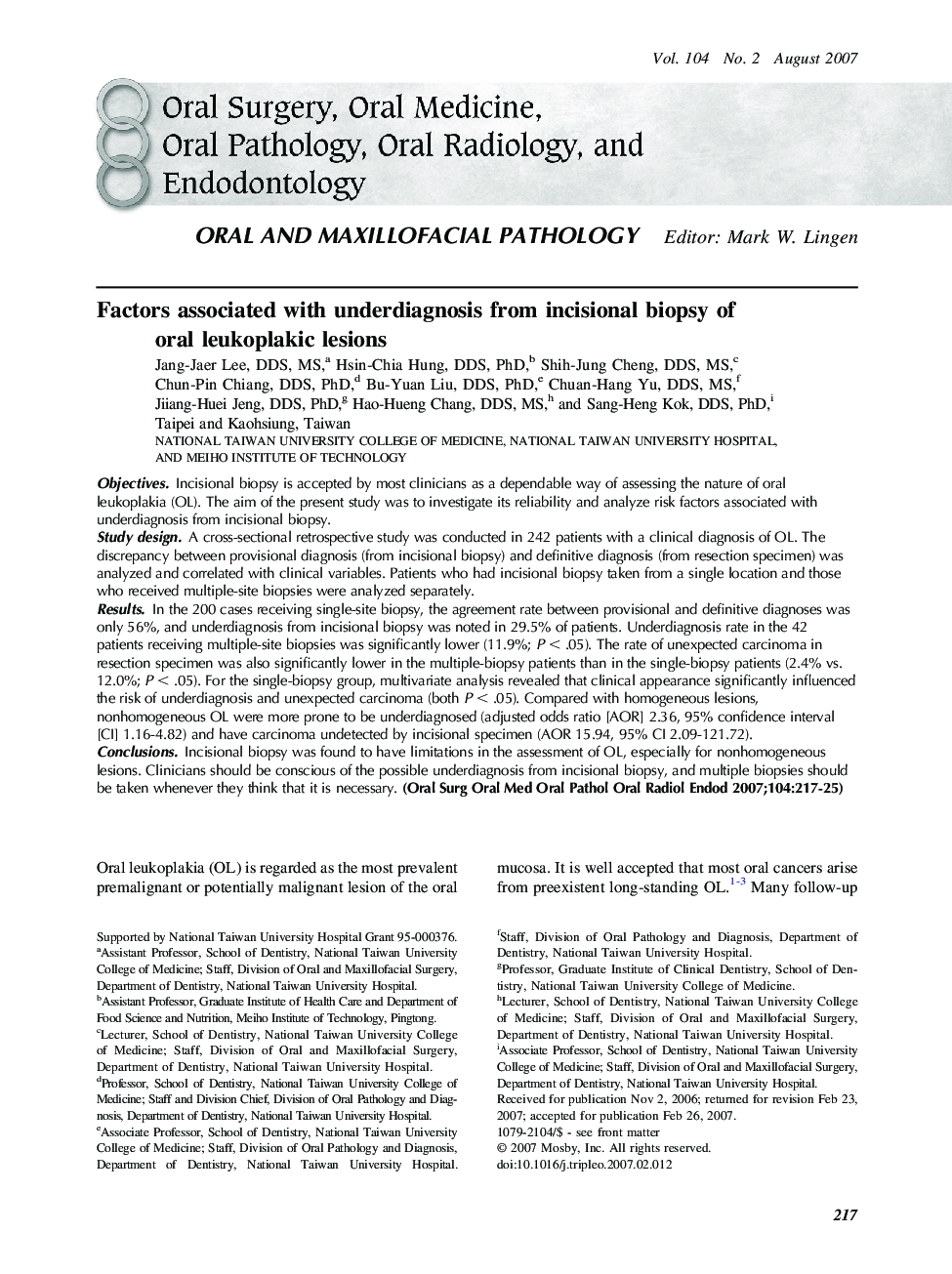| Article ID | Journal | Published Year | Pages | File Type |
|---|---|---|---|---|
| 3169122 | Oral Surgery, Oral Medicine, Oral Pathology, Oral Radiology, and Endodontology | 2007 | 9 Pages |
ObjectivesIncisional biopsy is accepted by most clinicians as a dependable way of assessing the nature of oral leukoplakia (OL). The aim of the present study was to investigate its reliability and analyze risk factors associated with underdiagnosis from incisional biopsy.Study designA cross-sectional retrospective study was conducted in 242 patients with a clinical diagnosis of OL. The discrepancy between provisional diagnosis (from incisional biopsy) and definitive diagnosis (from resection specimen) was analyzed and correlated with clinical variables. Patients who had incisional biopsy taken from a single location and those who received multiple-site biopsies were analyzed separately.ResultsIn the 200 cases receiving single-site biopsy, the agreement rate between provisional and definitive diagnoses was only 56%, and underdiagnosis from incisional biopsy was noted in 29.5% of patients. Underdiagnosis rate in the 42 patients receiving multiple-site biopsies was significantly lower (11.9%; P < .05). The rate of unexpected carcinoma in resection specimen was also significantly lower in the multiple-biopsy patients than in the single-biopsy patients (2.4% vs. 12.0%; P < .05). For the single-biopsy group, multivariate analysis revealed that clinical appearance significantly influenced the risk of underdiagnosis and unexpected carcinoma (both P < .05). Compared with homogeneous lesions, nonhomogeneous OL were more prone to be underdiagnosed (adjusted odds ratio [AOR] 2.36, 95% confidence interval [CI] 1.16-4.82) and have carcinoma undetected by incisional specimen (AOR 15.94, 95% CI 2.09-121.72).ConclusionsIncisional biopsy was found to have limitations in the assessment of OL, especially for nonhomogeneous lesions. Clinicians should be conscious of the possible underdiagnosis from incisional biopsy, and multiple biopsies should be taken whenever they think that it is necessary.
